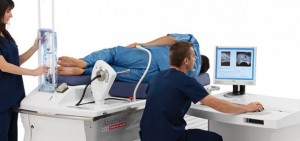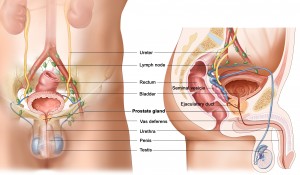HIFU or High Intensity Focused Ultrasound Therapy, the non-surgical treatment that has been used to treat men with prostate cancer, has finally received full approval from the U.S. Food and Drug Administration. Ablatherm HIFU is on track to become the treatment of choice for localized prostate cancer in American men, as it is in other countries.
After more than 10 years of clinical trials, EDAP TMS SA, the manufacturer of Ablatherm HIFU Integrated Imaging devices, received 510(k) clearance from the FDA for U.S. usage. Over 40,000 patients worldwide have had HIFU treatments for the ablation of prostate tissue to treat cancer. HIFU first received approval in Europe and has also been approved by Health Canada.
Prostate cancer is the number 1 cancer affecting North American men. According to the American Cancer Society, about 200,000 men will be diagnosed with prostate cancer this year, from which over 25,000 will die. Early detection and treatment are key. HIFU is intended to treat men with organ confined prostate cancer in the earlier stages (T-1 or T-2). HIFU is a single treatment but it can be repeated if required. Patients who have failed radiation therapy are also candidates for HIFU.
The Ablatherm Integrated Imaging device precisely delivers ultrasound through a computer controlled rectal probe. This is an outpatient procedure that is an alternative to traditional prostate cancer treatments like radiation and surgery, but with minimal side effects. HIFU is a proven treatment method that is effective and efficient, with early success determination. Of course, it is important to choose a facility with a great reputation and doctors that are certified and experienced in using HIFU technology.
Maple Leaf HIFU, located in Toronto, was the first provider of Ablatherm HIFU in North America and has performed more HIFU procedures than any other clinic in North America. Procedures for patients from the U.S. and Canada are conducted at the world class Cleveland Clinic Canada. This downtown clinic is staffed by top urologists who specialize in prostate cancer. Their doctors are all experienced and certified in the HIFU method and have also conducted multiple clinical studies proving the benefits of using HIFU as a prostate cancer treatment method.
Dr. William Orovan, the lead Urological Surgeon, clarifies: “Ablatherm HIFU has the best patient safety outcomes by far and cure rates are excellent. Side effects of HIFU, including incontinence and erectile dysfunction, are much less than traditional surgery or radiation.”
To determine if you might be a candidate, or for more information and published clinical studies involving FDA Approved HIFU to treat prostate cancer, visit: http://www.hifu.ca.



